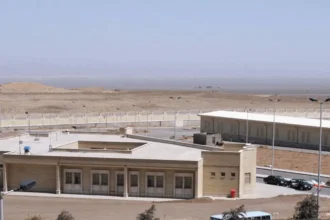The Trump big beautiful bill passed in the U.S. Senate after a long campaign of spirited exchanges and tense political maneuvering. It took the vote of Vice-President JD Vance to break the 50-50 tie, which seemed to decide the issue. The act is a main pillar of the second-term agenda of President Donald Trump, known formally as the One Big Beautiful Bill Act. Such an approval is a significant achievement in Congress by the Republican dominated Senate. Nevertheless, the fight is not quite over. The bill is now sent back to the House of Representatives, where it will be reviewed again, together with criticism facing it from the fiscal conservatives and moderates.
- Why Was the Senate Vote on the Bill So Contentious?
- What are the Important Parts of the Bill?
- What is the Cause of Division among House Republicans?
- What Is The Deadline Trump Is Pressuring?
- What has Elon Musk done about the Legislation?
- What can the Democrats do to fight the Bill?
- What Challenges Await the Bill in the House of Representatives?
- How Does the Bill Reflect Trump’s Influence and Shift in Economic Priorities?
- Final Thoughts
Why Was the Senate Vote on the Bill So Contentious?
The progress toward the approval of Trump’s big beautiful bill was not smooth. It ended up in a tie of 50-50, making the vice-president cast the deciding vote. Most of the Republican leaders managed to help lock in their members after the strenuous dealings, but three Republican senators, Susan Collins, Thom Tillis, and Rand Paul, teamed up with the Democrats to vote against the bill.
A key factor in the success was Senator Lisa Murkowski, who at first had withheld her vote because she was skeptical about Medicaid cuts in her state. She initially voted against it and voted on its side with perceptible reluctance on the ground of the harshness of the exercise process and the situation of vulnerable Americans. Here is the link to our article on the Trump Budget Bill
What are the Important Parts of the Bill?
The law will be an attempt to put the vast tax cuts that occurred in the first Trump term on a permanent basis. There are claims by its advocates as a pro-growth, pro-business policy, but critics still single it out as a policy that benefits the rich and will contribute to widening the national debt.
In order to balance the decreased earned revenue as a result of these tax breaks, the bill has proposed some extensive spending cuts. Among these are proposed cutbacks on food subsidies, Medicaid, which aroused fear among moderates and social welfare supporters. Although Trump has pointed out that every person can find something in the bill, its real effect is very controversial.
What is the Cause of Division among House Republicans?
Despite this earlier version being voted out by the house by a slim margin, matters have been beaten up by withdrawals in the house. Objections have come strongly from fiscal conservatives of the House Freedom Caucus, who caution that the modified version will bring an addition of $650 billion to the deficit per year.
The members of this division claim that the bill moves the party away from its promise of being responsible with the budget. Their open messages in social networks indicate that any effort to deviate from the initial fiscal structure will be considered an act of betrayal.
Meanwhile, other House Republicans are concerned that Medicaid cuts are going to be deeper than they thought. These lawmakers fear that such job losses will have a greater negative effect on their voters, particularly in rurally located and low-income households. Here is the link to our article on the Trump Budget Showdown
What Is The Deadline Trump Is Pressuring?
President Trump has continually emphasized the need to have the final copy of the Trump big beautiful bill on his desk by the first of July. Talking optimistically about a festive signing on Independence Day earlier, he has recently accepted that the deadline could be missed.
However, the setting of a deadline by the negotiators makes the process urgent. It also increases the pressure on the House Republicans, whose members now have to choose between accepting the amendments of the Senate or insisting on further amendments.
What has Elon Musk done about the Legislation?
One of the biggest supporters of Trump, tech billionaire Elon Musk, has become one of the most vocal opponents of the bill. He has criticized the suggested cuts to the support of renewable energy and the bonuses of electric vehicles, a move that would adversely impact his business affairs, in which one of them is Tesla.
Musk has even vowed to form his political party if his threats of backing opponents of incumbent Republicans going forward are not met. His denunciation provides an additional complexity to the already tense intra-party politics.
What can the Democrats do to fight the Bill?
To stall the passage of the bill, the Democrats have adopted procedural techniques. Even though they did not have enough votes to kill it, they wanted to draw attention to what they consider to be the negative effects caused by the bill on healthcare, as well as the working-class Americans.
Their action did manage to postpone the vote, but it was not enough to stop it. However, the resolute concerted opposition that was witnessed among the Senate Democrats would ensure that the bill encounters further resistance in submitting its case should it bring back crucially amended versions of it.
What Challenges Await the Bill in the House of Representatives?
The fate of the bill is now in the hands of the House of Representatives, where the leeway is very thin. Republicans can not lose more than three votes. The voting may be equally tight in the House as it is in the Senate, since there are several vectors in terms of resistance, fiscal, ethical, and political.
The bill, should it become law, would lock in Trump as the legacy figure on tax and budget policy with its long-lasting implications on the budgetary picture of the country. Nevertheless, any inability to resolve the Senate version with the House bill will scuttle the whole process.
How Does the Bill Reflect Trump’s Influence and Shift in Economic Priorities?
The approval of the big, beautiful bill by Trump would be an indication of a solidification of the power wielded by Trump amongst the republicans. It would also amount to an emphatic change in the direction of American economic policy priorities (toward welfare programs and away from tax breaks designed to encourage business investment).
Some opponents say the bill will increase inequality and weaken vital government services. To its fans, it is, then, nothing but a radical decision to release economic activity and cut back on government expenditures. One way or another, the bill has emerged as an acid test of Republican solidarity, as well as a political hotbed in an otherwise heated electoral year.
Final Thoughts
The close vote on Trump’s big, beautiful bill among the senators has plunged American politics once again into a high-stakes situation. The next few days will show whether Trump secures his most ambitious legislative achievement to date or faces another wave of internal revolt once the bill returns to the House.
The road is far from smooth, as Trump’s big beautiful bill may appear impressive to its supporters, but it continues to spark deep divisions. The outlook for Trump’s big beautiful bill remains uncertain, with its fate hanging in the balance as the deadline approaches and resistance within the Republican Party continues to grow.








